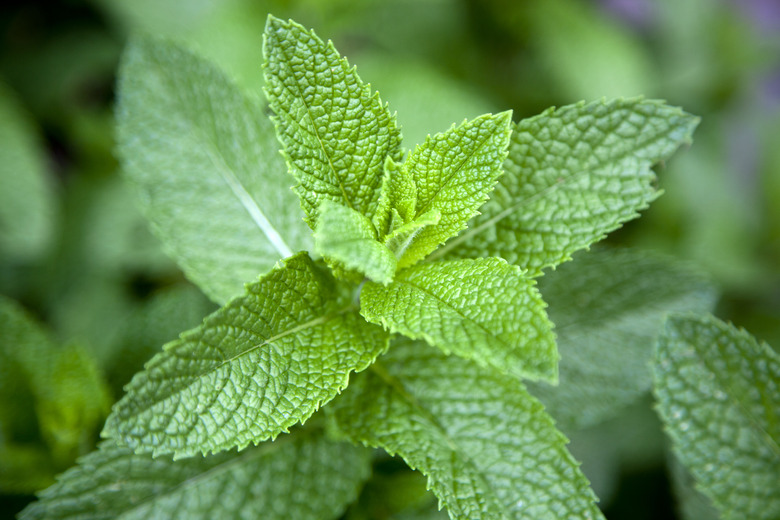These Are The Diseases Common To The Mint Plant — And What To Do About Them
We may receive a commission on purchases made from links.
Mint (Mentha spp., USDA zones 5-9) is a hardy perennial herb, but it can be taken down in a matter of days by one of a number of common fast-spreading fungal diseases. Warm, humid weather makes ideal conditions for fungal diseases to prosper that are common to the mint plant.
Common problems that affect the mint plant, such as powdery mildew, are typically caused by fungi found in the soil or carried on the wind. The fungi thrive in shady, wet conditions, inhibiting growth and eventually killing the healthy plant. Identify the disease that's making the bushy plant's leaves and stems look sickly so you can treat the problem before it kills the plant or finds a way to infect surrounding plants and vegetables.
Signs of Powdery Mildew
Signs of Powdery Mildew
Little white patches that appear on the healthy leaves of the mint plant are a sign of powdery mildew. It's a fairly common fungal disease that finds its way into the garden through the soil or on the wind. It doesn't discriminate and will quickly spread to surrounding plants if not stopped. Powdery mildew can slow the growth of the mint plant and should be removed as soon as it's spotted.
To remove powdery mildew, spray the affected plant with a fungicide that's safe for the garden and approved for mint plants, reading and following all label instructions for mixing, application, safety precautions and gear, timing, disposal and storage. Don't use chemical fungicides on mint that is grown for use in drinks and food. Because powdery mildew will thrive in shady areas, you should prune the plant back to allow for more sun and better air circulation, also pruning any surrounding plants that hang over the mint.
Black Stem Rot
Black Stem Rot
Soggy soil and/or mulch that's piled around mint stems creates an ideal environment for fungus to spread. Overwatering and slow-draining soils can cause black stem rot. The fungus will thrive in wet and cool weather as well.
Black stem rot shows up on the plant's stems as black or dark brown cankers. The leaves will turn yellow and wither.
Plants with signs of black stem rot should be removed from the garden, along with surrounding soil. Thoroughly clean out any containers that the affected plants were growing in. To prevent the spread of black stem rot in the garden, keep the soil aerated and ensure that it maintains a pH balance of around 5.5.
How to Identify Mint Rust
How to Identify Mint Rust
Mint rust is a fungus that enjoys high relative humidity in dry climates and can weather out the winter. The disease will present itself early with pale and distorted shoots that emerge at the first sign of warm weather.
The stems and leaves may get dusty orange pimples that pepper the shoots. These rusty-looking pustules may turn to black or to a pale yellow as the disease progresses.
Once pustules are spotted, remove the plants before the pustules can turn black and contaminate the soil. The pustules that form in the spring on the backs of the leaves and along the stem will break open in June or July to be carried on the wind to affect other plants. The newly infected plants won't show any signs of the mint rust until new shoots emerge the following spring.
